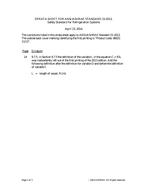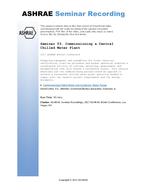The Kaupuni community consists of 19 affordable net-zero energy homes that were built within the Waianae Valley of Oahu, Hawaii in 2011. The project was developed for the native Hawaiian community led by the Department of Hawaiian Homelands. With high electricity prices in Hawaii, integrating energy efficiency and renewable energy to the design are critical to minimize energy cost. The energy features included in these all-electric homes were chosen using hourly energy modeling with building energy optimization (BEopt) software by the National Renewable Energy Laboratory (NREL). An optimization algorithm was applied to find the combinations of energy efficiency and renewable energy measures to achieve net-zero energy performance at least cost.
The community includes a mix of one-story and two-story homes ranging from 1306 to 1616 square feet and is located in a relatively hot region of Oahu with low winds. Each home is equipped with high efficiency windows, architectural shading, well insulated walls and roof, light colored roofing, SEER-16 air conditioning, solar water heating, high efficiency appliances and lighting, and a 6.37 kW photovoltaic system. Wholehouse electricity consumption and indoor temperature has been monitored for all homes since their construction.
This paper presents a comparison of the modeled and measured energy performance of the homes. Over the first year of occupancy, the community as a whole performed within 1% of the net-zero energy goals. The data show a range of performance from house to house with the majority of the homes consistently near or exceeding net-zero, while a few fall short of the predicted net-zero energy performance. The impact of building floor plan, weather, and cooling set point on this comparison is discussed. The project demonstrates the value of using building energy simulations as a tool to assist the project to achieve energy performance goals. Lessons learned from the energy performance monitoring has had immediate benefits in providing feedback to the homeowners, and will be used to influence future energy efficient designs in Hawaii and other tropical climates.
Citation: ASHRAE Conference Papers, Denver, CO
Product Details
- Published:
- 2013
- Number of Pages:
- 8
- File Size:
- 1 file , 1.2 MB
- Product Code(s):
- D-DE-13-C075


